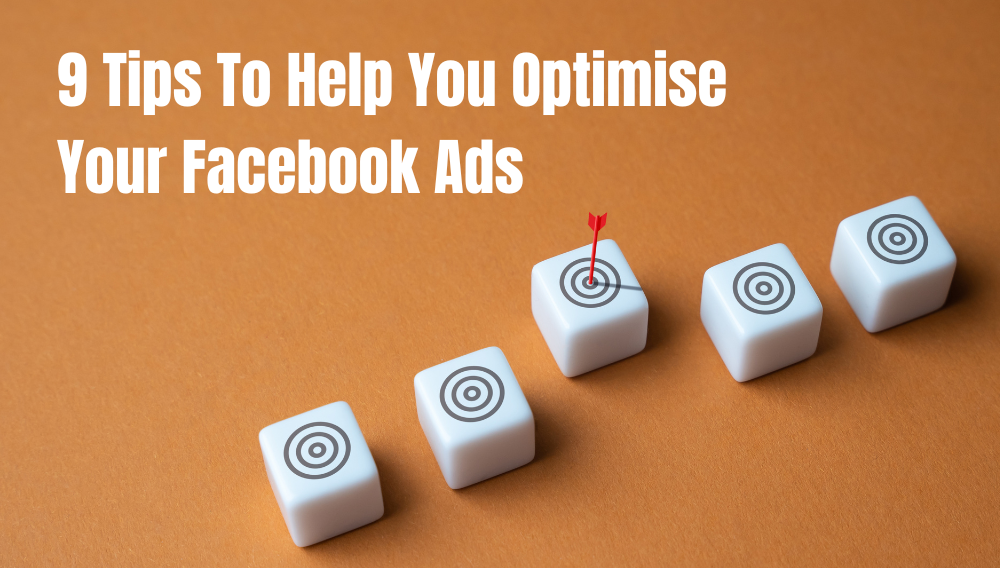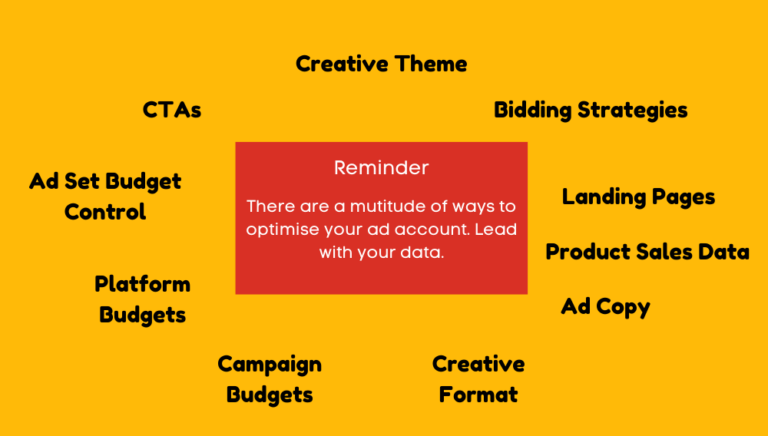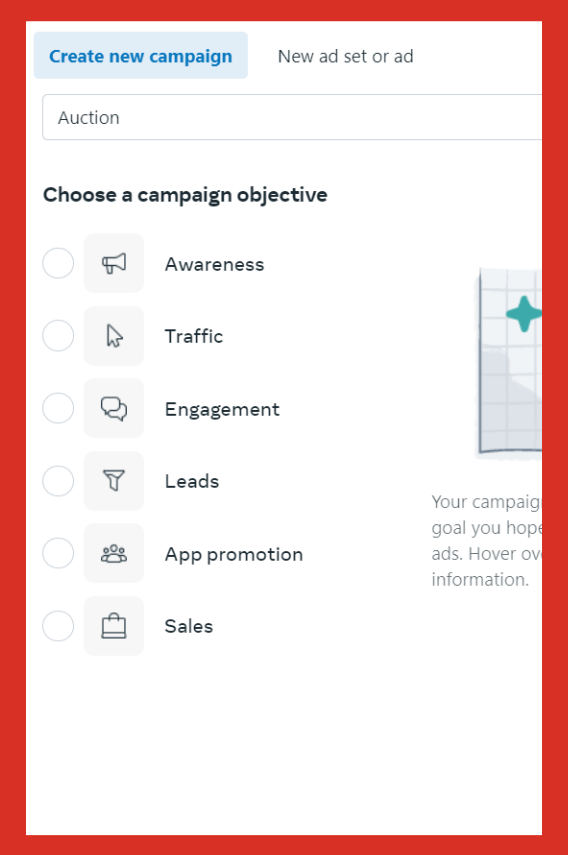
9 Facebook Ad Optimisation Tips
To Supercharge Your ROAS
When optimised well, Facebook ads are one of the best ways to generate revenue for your business.
With proper optimisation, you can see your profitability skyrocket and your customer acquisition costs plummet.
However, you need to learn how to optimise your ads to ensure your budget is used efficiently.
If your ad campaigns aren’t working, there could be several reasons why. That’s why we wrote this article—to help you optimise your Facebook ad campaigns.
As you go through these 10 Facebook ad optimisation tips, remember that experimenting is crucial.
Sometimes, it takes methodically tweaking audiences or trying different creatives, colours, ad copy, or CTAs until it all comes together to produce ads that yield a higher ROI.
Why’s It Important to Optimise Facebook Ads?
Would you rather achieve a 3X ROAS or settle for a 1.5X return? It’s a rhetorical question, but you understand the point.
Ad spend can quickly drain your financial resources if not managed carefully. Without optimising your ads as much as possible, you’re likely missing out on better results and leaving money—or growth—on the table.
Consider the competition, too. On Facebook, you’re a small fish in a big pond, competing with 93% of marketers vying for attention.
If there are ways to optimise Facebook ads for better performance, it’s safe to assume your competitors are testing them out. Choosing not to optimise your ads puts your business at a significant disadvantage.
Before we dive in, here’s a reminder of several ways you can optimise your Facebook Ads (feel free to download and share!:

1. Choose the Right Campaign Objective
The objective you select determines how Facebook’s algorithm builds and targets your audience.
For instance, if you want to reach women aged 25-44 with an interest in yoga, Facebook will further refine this audience based on the objective you choose. If you select a Purchase objective, Facebook will show your ads to people more likely to buy your products compared to using a Traffic objective.
There are 6 Facebook ad objectives to choose from, each falling into one of six main categories:
Awareness
Traffic
Engagement
Leads
App promotion
Sales
Facebook’s objectives are intentionally grouped into three general categories, reflecting each step of the buyer’s journey. Selecting the right objective is crucial for maximizing the success of your ads.
When creating your ads, understanding the strengths of each objective is key. Here’s a quick overview to guide you in setting up your campaign:

Awareness
Looking to increase your business’s visibility? Facebook’s Brand Awareness objective does exactly what it says—helps more people become aware of your brand.
If your goal is to build brand recall or ensure people remember a unique feature of your brand, Facebook will expose your target audience to your brand awareness ad.
Traffic
The Traffic objective can be seen as the “choose your destination” option. Ads created with this objective are optimized to drive traffic to the link of your choice.
You can direct traffic to landing pages, an app, a blog post, your homepage, a squeeze page, your eCommerce store, or a special opt-in offer. With the Traffic objective, link clicks are the main focus. The more you invest in this objective, the more clicks you’ll generate—though it’s primarily optimized for this purpose and not much else.
Engagement
Likes, shares, comments, and overall interaction—that’s what the Engagement objective is all about.
As more people interact with your ad, its visibility increases, reaching a broader audience. Engagement is an excellent ad objective if your goal is to boost Facebook page likes, gain followers, and improve your click-through rate (CTR).
Leads
Lead generation allows you to collect leads, making it an effective way to grow your email list or gather a warm audience for a product launch.
One of the key benefits of the Lead Generation objective is that users can opt-in to your offer without leaving the platform, making it as seamless as possible for your audience to participate.
App promotion
App Promotion helps you drive installs and engagement for your app, making it an ideal choice for increasing your app’s user base or encouraging existing users to take specific actions within the app.
With the App Promotion objective, users can easily download or interact with your app directly from the ad, without unnecessary steps. This streamlined experience boosts your chances of converting potential users and keeping current ones engaged.
Sales
The Sales objective is designed to drive conversions, making it the go-to choice for boosting your online sales or encouraging specific purchase actions.
With the Sales objective, you can target users who are most likely to buy your products or services, guiding them directly to your checkout page or special offers. This objective is all about maximizing your return on investment by turning ad clicks into actual sales.
2. Test Creative Themes and Formats
A/B testing is a powerful method to compare two versions of an ad to determine which one performs better. Advertisers create experiments where two or more ad variants are shown to viewers at random, followed by an analysis to see which variant achieves higher conversion rates.
You can test various elements, such as color and CTAs. However, when optimizing Facebook ads, we focus on testing two key elements.
3. Test Landing Pages
Another essential Facebook ad optimization tip is testing your landing pages. Even with the growing popularity of in-app shopping through Facebook Shops, directing viewers to your website remains crucial for data collection and testing different landing page types.
Ecommerce stores often test various landing pages against each other. For example, depending on the campaign type, you might send viewers to a collection page versus a product page. If someone saw an awareness ad on Facebook, directing them to your homepage for more information about your brand may perform better than sending them to a product page.
4. Exclude People Already in Other Ad Sets
This is a common mistake that beginner marketers make with their ad sets—they fail to exclude audiences that are already in other ad sets.
The problem? When you mix audiences, you’re essentially competing and bidding against yourself to reach the same person.
You might also find that your retargeting audiences are still included in your prospecting audiences, leading you to believe your ROAS is high when, in reality, it’s inflated by retargeting.
To optimize your ads, it’s crucial to exclude audiences based on their stage in the conversion funnel, ensuring users are filtered into the right customer journey.
How do you do this?
1. As you’re creating an ad set, in the Audience section, click Custom Audiences.
2. Select the audiences you want to use, then click on Exclude to exclude audiences based on the choices provided in the field.
Once your ads have been approved and have had time to run, review their performance on your dashboard. The bottom line? Excluding audiences is an effective way to manage your ad budget and can significantly improve your ROAS when implemented correctly.
5. Double Down on High Performing Ad Formats
If something is working, why change it? The same principle applies to Facebook ad formats.
For instance, if you find that Instagram Stories outperform feed posts by 70%, allocate your budget accordingly to maximize those results.
You might run a few Facebook ads that don’t deliver, but once you identify the ad formats or ad sets that are performing well, concentrate your spend on them.
While experimenting with new ad types can be beneficial, focusing on the ads or platforms that yield the best results is often a more effective strategy. This approach helps you maintain a high ROAS.
6. Keep an Eye on Ad Frequency
Too much of a good thing can become problematic, and the same applies to your ads. When people see your ad too many times without taking action, it usually means they’re not interested.
Facebook uses sampling and modelling to estimate your ad’s frequency, so the frequency score it provides is just an estimate.
Ideally, you should keep ad frequency below three. A good indicator of frequency fatigue is a significant drop in engagement as you increase your ad spend. If you notice this, it’s a sign that your audience may be experiencing ad fatigue.
7. Experiment with Lookalike Audience Sizes
A Lookalike audience consists of Facebook users who resemble your existing customers and are likely to be interested in your business. These audiences are easy to create and implement by uploading a CSV file, making them a great tool for finding high-converting users.
Facebook allows you to choose how closely you want to match your base audience, with options ranging from 1% to 10%. A 1% Lookalike audience consists of people who closely resemble your base audience.
So, what’s the best Lookalike audience percentage? Like the optimal time to run ads, there’s no one-size-fits-all answer. It requires experimentation to find what works best for your brand.
Try testing Lookalike audiences in the 1%, 5%, and 10% ranges to gather data. AdEspresso’s experiment showed that smaller Lookalike audiences often perform better than larger ones. Aiming for a lower range, such as 1%-3%, can be more effective.
Once you see success with smaller ranges, you can consider exploring larger Lookalike audiences. Brands with broader market appeal may benefit from starting with a 10% Lookalike audience, especially if they have already established a strong product-market fit.
8. Exclude Existing Customers from these Campaigns
When running Facebook ad campaigns aimed at acquiring new customers, it’s crucial to exclude your existing customers from these ads. Otherwise, you risk wasting your budget by targeting individuals who are already familiar with your brand, especially if your ads include incentives like first-time purchase discounts.
For businesses with products or services that encourage repeat purchases, you should run separate campaigns for existing customers. Segment these campaigns based on the time since their last purchase to tailor your approach.
For example, if you want to exclude customers who have purchased in the last 90 days, here’s what you need to do:
- Create a New Audience: Set up a custom audience excluding those who have made a purchase within the past 90 days.
- Adjust Your Ad Sets: Ensure your core campaigns are only targeting new prospects, while your existing customer campaigns focus on re-engagement or upselling.
By excluding existing customers from acquisition campaigns and targeting them separately, you’ll optimize your ad spend and increase the effectiveness of your campaigns.
9. Optimise Your Ad Budgets
There are several strategies you can use to optimize your ad budgets within Facebook Ads Manager. Effective budget management can significantly improve your return on ad spend (ROAS) and help you achieve your campaign objectives more efficiently.
Here are some key methods:
Daily vs. Lifetime Budgets:
Choose between setting a daily budget or a lifetime budget for your campaigns. Daily budgets allow for consistent daily spending, while lifetime budgets give Facebook more flexibility to allocate spending across the campaign's duration, often leading to better optimization.
Bid Strategy Selection:
Facebook offers various bid strategies, such as Cost Cap, Bid Cap, and Lowest Cost. Selecting the right strategy based on your campaign goals—whether it’s maximizing conversions or controlling costs—can make a big difference in your budget's effectiveness.
Campaign Budget Optimization (CBO):
Enable CBO to allow Facebook to automatically allocate your budget across ad sets, based on their performance. This helps ensure that more of your budget is spent on high-performing ad sets, maximizing results.
Manual Adjustments:
Regularly monitor your campaign performance and make manual adjustments to budgets, bids, and targeting as needed. This hands-on approach allows for fine-tuning based on real-time data.
A/B Testing:
Conduct A/B tests to compare different ad creatives, audiences, and bidding strategies. Use the results to allocate more budget to the best-performing variants.
By leveraging these strategies in Facebook Ads, you can optimize your ad budgets to drive better results and get the most out of your marketing spend.
Start Optimising Your Facebook Ads Today
Running a Facebook Ad campaign can be challenging, but with this guide, you’re well on your way. And if you need a hand, HOT IRON Digital is here to help.
We’ve helped numerous clients boost their Facebook Ads results and achieve their ROAS goals. Ready to see the same results? Get in touch with us today!
